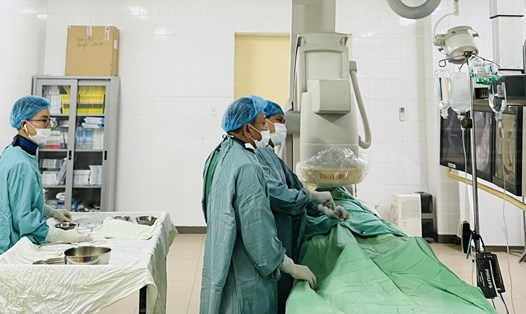What is an aneurysm?
According to Dr. Sanjeev Dua, Director of Neurosurgery, Max Super Specialty Hospital, Patparganj (India), aneurysm is a condition in which a blood vessel bulges due to a weak vessel wall, which can occur in many locations such as the brain, abdomen and chest.
Thoracic aortic aneurysm, which occurs in the aorta (the artery that carries blood from the heart), is a dangerous type because it often has no symptoms and grows slowly. If it ruptures, it can cause severe bleeding and be life-threatening and requires prompt emergency care.
Causes and risk factors
Aneurysms can form due to a number of factors, including genetics and other health conditions. According to Dr. Sanjeev Dua, some of the main risk factors include:
High blood pressure: Weakens blood vessel walls.
Atherosclerosis: Fatty buildup causes blood vessels to harden.
Genetic factors: Disorders such as Marfan syndrome or Ehlers-Danlos.
Age: Common in people over 60.
Smoking: Weakens blood vessels.
Family history: If a relative has this disease.
Symptoms of thoracic aortic aneurysm
Thoracic aortic aneurysm can cause the following symptoms:
Chest pain: A feeling of pain or pressure in the chest, often occurring when an aneurysm stretches or grows larger.
Back pain: Back pain, especially in the upper back, can be a sign of a thoracic aortic aneurysm.
Shortness of breath: The aneurysm's compression on surrounding organs can cause difficulty breathing or shortness of breath.
Difficulty swallowing/dry cough: An aneurysm can press on the esophagus or trachea, causing difficulty swallowing or a dry cough.
Dizziness or fainting: If the aneurysm causes reduced blood flow to the brain, it can lead to dizziness or fainting.
Diagnosis of thoracic aortic aneurysm
Chest X-ray: May detect large aortic aneurysms, although they are not always obvious.
Echocardiogram: Helps examine the structure and function of the aorta, detect aneurysms.
Computed tomography (CT scan): Provides detailed images of the size and location of the aneurysm, helping to assess the condition more accurately.
Magnetic resonance imaging (MRI): Another imaging method to determine the extent and location of an aneurysm.
Thoracic aortic aneurysm treatment
Treatment for a thoracic aortic aneurysm depends on the size, location, and severity of the aneurysm. Treatment options include:
Monitoring: If the aneurysm is small and asymptomatic, your doctor will monitor it regularly.
Medication: Control high blood pressure to reduce the risk of an aneurysm developing.
Surgery: Remove the aneurysm and replace it with an artificial vessel if the aneurysm is large or at risk of rupture.
Endovascular intervention: Aortic stent placement in certain cases.
Conclude
Dr. Sanjeev Dua emphasized that thoracic aortic aneurysm is a dangerous condition that can lead to serious complications if not detected and treated promptly. Early diagnosis and adherence to appropriate treatment are important to reduce the risk of rupture and ensure long-term health.











